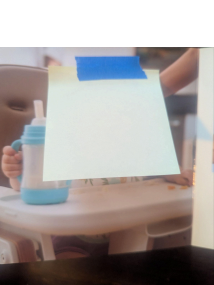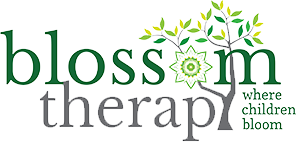5 Ways to Make Books and Reading with Children Interactive and Fun
By Amanda “Mandy” Mich, MS, CCC-SLP
“How can I get my child to pay attention during storytime?”
As a pediatric speech-language pathologist working with children newborn to five years old and their families, I hear this all the time. One of my favorite things to talk about with parents is how to build positive associations with books and reading. For some, book reading is a fun daytime
activity and for others, it’s part of a bedtime routine. There are no best times to read books. Book reading is best when distractions are at a minimum (and screens are turned off). My number one rule for book reading is that, well, there are no rules!
As an adult, you may think book reading has to look a certain way, but when you think about it, what is the goal of reading a book to your child? To spend time together? To teach new ideas and concepts? To promote the joy of early book reading? Reading a book word for word can support these goals, but I find that book reading needs to be meaningful, and that looks different child to child, family to family. If you notice that your child is not showing interest in books or shared book reading time, or you’re just looking for new ways to freshen up storytime, try using these simple tricks below.
1. Keep it short and simple
Many kids’ books have too many words. There is no concrete measure for how much is too much, as it varies child to child and book to book. I would recommend observing what your child’s favorite book is and noticing what the characteristics are. Does your child love animals? Do they smile and laugh during book reading, or are they more serious and thoughtful? Do they like to read by themselves or do they want a parent to read to them? This can give you more information on finding “just right” books for you and your child.
I tend to look for books with a few words, colorful pictures, and memorable words and phrases. Some favorites include Goodnight Moon, Peek-a-Who, and Brown Bear Brown Bear. Pictures from Amazon.com
Categories: Tips for Parents, Pediatric Speech Therapy, Reading, Babies and Toddlers
2. Make it interactive
There are so many ways to make reading interactive for children of all ages. Adding a sensory component, such as auditory, tactile, or visual input, can help kids sit and interact with books for longer than just hearing it read aloud. I like to think about how a child is experiencing the book, how they hear, touch, and see it. When you think about it as an experience, you can find ways to add or change the experience! You will know you hit that “sweet spot” when you notice increased eye contact, smiles, and joint attention (such as looking at the book and back at you!)
When reading the book itself, try singing the words or reading it in different voices. Does your child look at the book or you differently? This can make stories come to life and feel more interactive and alive for children. By adding personality to the words, I often find more engagement from children.
When there are multiple children (or during my therapy sessions in daycare), I’ll pause the book and ask questions. You can ask general questions, such as “what do you see?” (which gives your child an opportunity to narrate what they see on a page) or “where is the ____?” (which gives your child an opportunity to demonstrate knowledge and use an isolated finger point, a great gesture and communication tool for sharing attention). Even for younger children, you can talk about how characters may be feeling, talk about their expressions and motivations. If it’s a familiar book, you can ask them what comes next.
There are many types of books that build interaction right into them. Flap, touch-and-feel, and poke-a-dot books are some of the types out there.
If your books aren’t interactive, don’t fret. You can be the source of interaction or simply make flap books yourself. Using painter’s tape (so you don’t damage the book) and Post-It notes you can make any book a flap book.


Peek-a-boo, baby!
3. Don’t Just Read…Discuss
This one goes hand-in-hand with point number one. You don’t have to read all the words on the page. There are plenty of other things you can talk about when reading a book to your child, including:
– Common objects, animals, or toys seen in the pictures
– Pre-academic concepts, such as colors, shapes, letters
– Counting the number of favorite pictures (such as “one, two, three stars!”) – Identifying the action words (they’re running, he’s eating, she’s dancing) – Discussing in general; maybe you and your child also love the tacos in Dragons
Love Tacos, or maybe you’re feeling grossed out looking at a spider in There Was an Old Lady Who Swallowed A Fly
4. Have the book be the object of play
You can incorporate books and reading into playtime too. I can’t tell you the number of times I’ve had a book propped up to be a ramp for a car, a roof for a house made of blocks, or a bridge for Little People to walk across. I’ve also done silly or unexpected actions with books, such as flapping the cover and pretending it’s “flying” like a bird. When it’s hot, sometimes I’ll use a book as a fan to cool down, using sound effects such as “whoosh!” or “phew!” A simple play idea is slowly opening a book while saying “open” very slowly and then snapping the book shut and saying “close” really quickly.
Categories: Tips for Parents, Pediatric Speech Therapy, Reading, Babies and Toddlers
5. Talk about the parts of (and people behind) the books
Talking about parts of a book can be just as important as the story itself. Pre-literacy vocabulary can include words such as page, word, cover and back of the book. This can be great to support school readiness as you will be talking about parts of an object (such as the door of a car or sail on a boat).
At the end of the day, if you still need some inspiration, check out the local library. You and your child can both pick out new books, which can be an exciting time for your child to take steps towards independence and choosing books that align with their interests. Many libraries offer programs for children and families, such as craft time, summer reading challenges, and storytimes. Take a look at audiobooks or read aloud videos available on Youtube. All in all, your child wants to spend quality time with you, and there is no “right” or “wrong” way to spend time with books!
Have concerns or questions? Occupational therapists and speech-language pathologists can support children and families in many developmental areas. Contact us today to schedule a virtual or in person consultation with a trained expert!
Categories: Tips for Parents, Pediatric Speech Therapy, Reading, Babies and Toddlers

